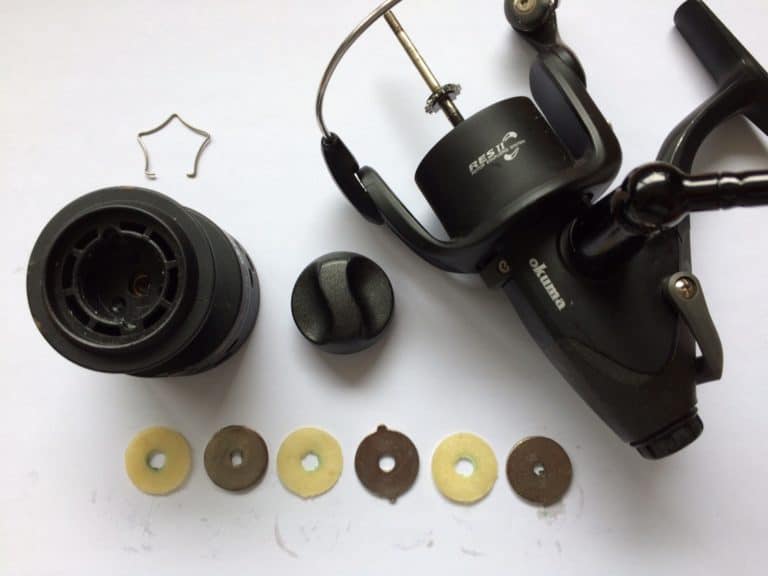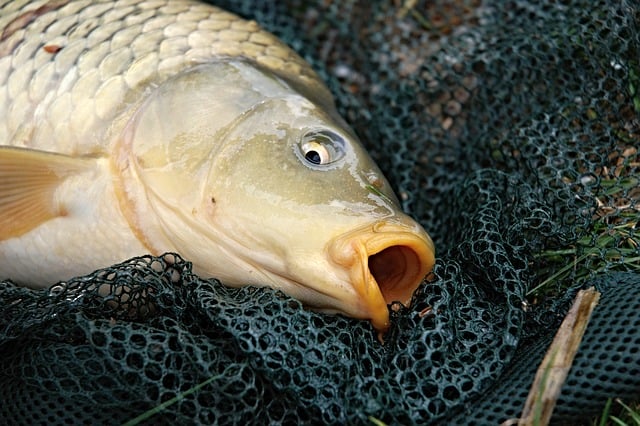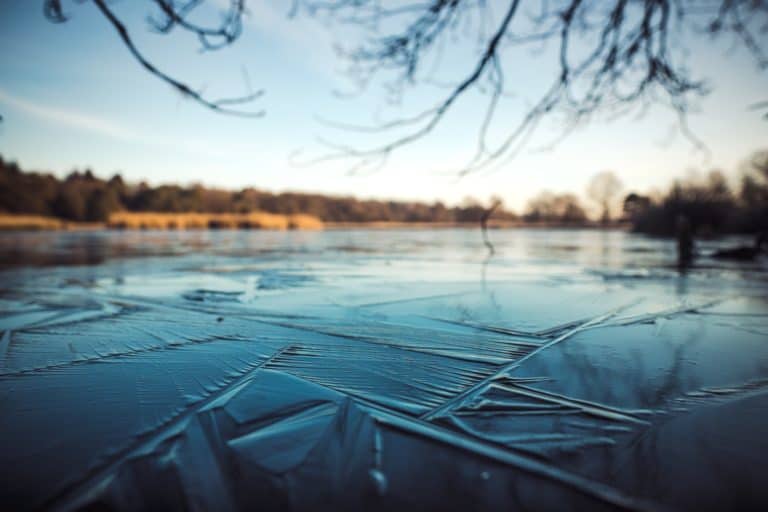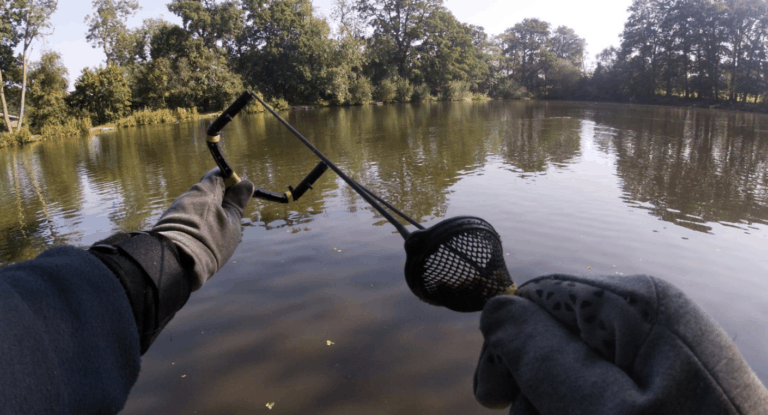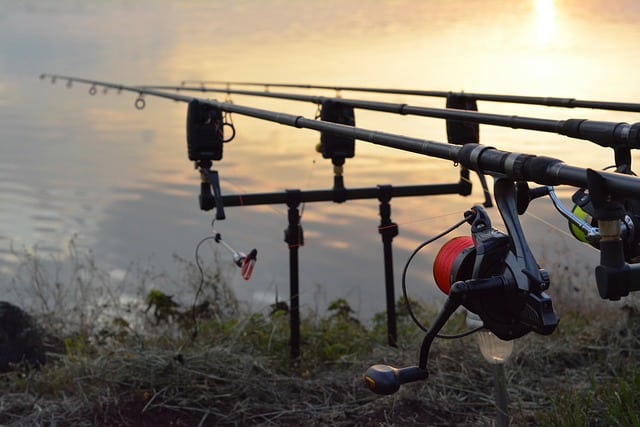How to stalk carp – A beginners guide

With no doubt, we can say stalking is one of the most exciting and effective ways to catch carp. You can actually see the carp take your bait and the whole experience is a ton of nail-biting fun. we were surprised however to see the amount carp anglers that have never tried stalking or have been unsuccessful.
Stalking carp doesn’t have to be hard, the most important thing is finding the right location and stalking at the right time. From there its as easy as lowering a rig into the water, however getting it right the first time is tough and requires some practice and patience. But once you got the hang of it, it’ll be the most fun you’ve ever had carp fishing.
We’ve personally had some awesome results from stalking, it does require you to focus and remain patient but the rewards are absolutely worth it!
The margins
Stalking carp is best in the margins. When free-lining, your casting distance becomes very limited, so stalking in the margins is the only thing that really makes sense.
We tend to stalk carp with bread and other surface baits but bottom baits also work really well in the margins, however trying to stalk at range with a bottom bait is quite difficult, fish will get very easily spooked if a lead comes crashing down on them.
You can also target fish on the surface at range, but for this, you’ll need a control float. We don’t really recommend using a control float unless you absolutely have to, free-lining in most scenarios is much better which is why fishing in the margins is preferable when stalking.
Whether you’re free-lining with a piece of fluffy bread of placing bottom baits in the margins, its important to stay ultra-quiet and not make a sound when stalking in the margins. Carp get spooked very easily, especially big carp as they are older and have likely been caught multiple times making them very wary of anglers, so if you want to trick them into taking your bait, its important to stay vigilant when on the bank.
Bait:
Bottom baits – For bottom baits, we’ll usually go for a washed-out boilie or a 14mm pellets, surrounded by a small pile of either groundbait, crushed up boilies or sometimes even just a few handfuls of sweetcorn.
Surface baits – The bait we most commonly use when we’re stalking carp in the margins is just plain bread squeezed around a hook, we find the most effective way is to have bread simply hooked on with the tip showing.
You don’t need any fancy, expensive baits when stalking carp, we’ve found that our most effective bait when stalking is just plain old white bread from the supermarket. It works wonders when surface fishing and it’s also dirt cheap, we tend to go through around half a loaf per session which costs approximately 25p!
The downside of using bread as the bait is that it’s not very robust and it can’t stay in the water for more than a few minutes otherwise it will just melt off the hook. Bread also doesn’t withstand casting very well and can often fall off during mid-flight.
If you’re going to be casting larger distances and leaving, you leave the bait in the water for a longer time, it’s worth switching out the bread for dog biscuits which are much tougher. In our opinion, we don’t think that it is quite as effective as bread but it’s still a good alternative if you’re fishing further out.
Find out what works
When we arrive at any new lake we try to speak to some of the local anglers who’d been fishing the lake for a while, more than often kind enough to give us some info on the lake, what baits work, where the bigger fish are, which swims are active, etc. In our experience, the majority of anglers are happy to help and are often knowledgeable about the lake so it is worth asking around.
Quiet!
Carp are very easily spooked and the older/bigger they get the more wise and cautious they become, so you need to be very careful and try to be as quiet as possible. Try not to get too close as well, if the carp see a big looming shadow over them, they’ll get spooked and scatter.

Gear
Having a good lightweight stalking rod is also a major advantage when doing such an active style of fishing in which you have to move around a lot. Although a stalking rod isn’t strictly required and you can technically stalk carp with any old rod, it does make all the difference when you’re moving around in tight swims and holding the rod for prolonged periods of time.
One of our favourite stalking rods is the Wychwood Extricator MLT (check price on Amazon) It’s a compact, light rod which is perfect for tight swims. It ranges in length as well, from just 6ft, all the way to 10ft long. We personally prefer the 9ft model as you get the best of both worlds, the advantage in maneuverability and the advantage in length which gives you a larger casting range.
The reel we use is the MAP ACS 4000 FS (check current price on Amazon)
Observation
The first thing we did when we arrived at the lake we took a stroll around, it was a small fishery in the west midlands but as soon as we arrived we could tell it was incredibly active, big carp were jumping and splashing at the surface and we were both eager to get our rods out, but we took our time to look around and sure enough it paid off.
Its amazing how many anglers can’t be bothered to do this, a lot of people just park themselves in the swim nearest to their car and get frustrated when they don’t catch anything. Looking for a decent swim only takes around 10 minutes it can completely transform your fishing session.
Its always important to look all around the lake, sometimes the biggest carp can be directly below you and you won’t know. Polarized sunglasses really help to spot the fish and we take them on every session.
The pairs we recommend are the Verdster TourDePro Polarized Camo Sunglasses
Baiting up
Once we found our spot we started “chumming up” the spot and slowly but surely the carp became more confident and started to feed. This was early summer in a heavily stocked lake, your results will differ depending on the lake you’re fishing but using bread as bait does work.
The most important part of our success is that we kept the carp at the surface. We like to bait up our swim little and often to keep the fish circulating in our swim. This is particularly easy in the spring and summer because, in the warmer climates, the carp like to stay in shallow water because small crestations and other natural food sources are there.
Basically they like to circle the perimeter of the lake which makes stalking in the summer much easier.
Features
We’ve seen quite a lot carp hiding near lily pads, reeds, and vegetation. Looking around these spots is worthwhile, often fish are lurking around these spots, this is because they feel comfortable feeding there and especially the larger fish don’t feel pressured by anglers.
Seasons
Unfortunately stalking carp isn’t for all seasons and it only is an effective method of catching on warm days. This is why we recommend stalking for the peak of summer where the fish are most active and ready to feed.
Another reason why stalking is so effective in the summer is that, as the water gets warmer they go to the shallows to feed on natural crestations and usually circle the perimeter of the lake where the water is shallowest, this makes spotting and reaching the fish much easier.
So there you have it, a quick guide on how to stalk carp, if you found this article useful then feel free to check out some of our others @carpreviews.co.uk

